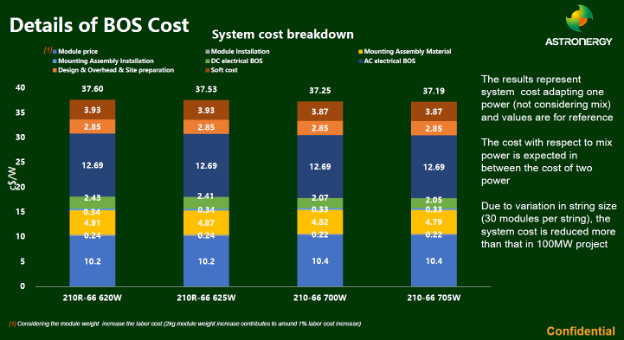


When choosing the ideal solar module for a project, many factors need to be considered, such as efficiency, installation cost, and equipment durability. However, one of the most important yet often overlooked criteria is LCOE (Levelized Cost of Energy). This metric helps understand the average cost of the energy produced by a solar system over its lifetime. Understanding LCOE can be crucial for making the best purchasing decision, ensuring not only the quality of the system but also the return on investment (ROI) over time.
Do You Know What LCOE Is?
LCOE, or Levelized Cost of Energy, is a way to measure the cost of generating energy throughout the lifetime of a power plant or solar system. It shows the average cost of each kWh (or MWh) of energy generated, considering all costs involved in the process.
The formula to calculate LCOE is simple:
LCOE = Total Lifecycle Cost ($ - including both CAPEX and OPEX) ÷ Total Energy Produced (kWh or MWh)
LCOE helps compare different technologies or energy generation projects. The goal is to choose the option that provides energy at the lowest cost over time.
Why Is LCOE Important When Choosing a Solar Module?
Although more advanced solar modules may have a higher initial cost, they generally offer a lower LCOE over time. This is because these modules require less maintenance, have greater reliability, and generate more energy efficiently.
At Astronergy, we use TOPCon 4.0 n-type technology in our modules, such as the ASTRO N8 (bifacial 720W), which offers several advantages, including:
• Higher energy generation efficiency: The modules make better use of sunlight, producing more energy per square meter.
• Lower degradation over time: This means the modules maintain high performance for longer, reducing losses and improving return on investment.
• Good performance under adverse conditions: Even on cloudy days or during early morning and late afternoon hours, the modules continue generating energy with high efficiency.
• Thermal resistance: They are more heat-resistant, which is a major advantage for regions with high temperatures.
Practical Example:
Let’s imagine you are installing a solar system for a medium-sized power plant. If you use monofacial 400W modules, the annual energy production will be around X MWh, with an LCOE of Y.
Now, replacing these modules with ASTRO N8 (bifacial 720W) while maintaining the same installation area, you can achieve an energy production of Z MWh, since the bifacial technology captures reflected light from the ground, increasing energy generation. As a result, the system’s LCOE can be reduced, as more energy is generated with the same initial investment. In the long run, the plant will experience a significant reduction in operating and maintenance costs, as well as a faster return on investment.
Therefore, it is essential to thoroughly understand the products and their technologies to deliver the best solutions to your clients. At Astronergy, we are committed to this and remain at the forefront of research and development.
Do you still have questions about which photovoltaic module to choose? Contact us or speak with one of our specialists.
